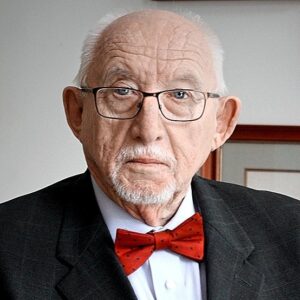Sweating the Small Stuff: Rural and Urban Perspectives on Post-Secondary Preparation

Overview
It seems indisputable that preparing students for success beyond high school should be the end goal of Colorado’s public school districts. While few educators would disagree with that statement, there are divergent opinions on how to get there. That is why Keystone Policy Center has unveiled a new report providing an in-depth analysis addressing the urgent challenge of equipping students for success beyond high school. This comprehensive examination, titled “Sweating the Small Stuff: Rural and Urban Perspectives on Post-Secondary Preparation,” focuses on two distinct educational environments: Denver Public Schools’ CEC Early College and Center Consolidated School District 26JT.
An abundance of research studies released in recent years show that a rapidly growing percentage of well-paying jobs being created or soon to be created will require education or training beyond high school – 70 percent by 2027 is one oft-cited figure. Most of these studies predate the sudden explosion of widely available artificial intelligence tools like ChatGPT, which seem likely to accelerate that trend.
Over time, the definition of what constitutes post-secondary education has shifted. For decades academic tracking in high schools pushed many low-income students and students of color into non-college pathways that ended at high school graduation (if not before) and paved the way for white and more affluent students to go to four-year colleges. As two-year community colleges and associate degrees proliferated, the “college for all movement” gained prominence in the early 2000s. This movement emphasized the importance of a four-year degree but sometimes grudgingly acknowledged the value of two-year degree and industry certifications as well.
More recently, the definition of post-secondary education has broadened further to include trade union apprenticeships, certificate programs, and even military service in some cases. Driving this change has been the growing realization that significant numbers of jobs that pay good wages go unfilled because too few people qualify for them. Continuing some kind of course of study after high school, including narrowly tailored training programs, came to be seen as a viable path to a middle-class lifestyle.
Summary of Recommendations
The successful post-secondary work being done at CEC Early College and in the Center School District is based on many years of experience. Both institutions have kept a persistent focus on not only getting high school graduates into post-secondary opportunities, but being prepared to succeed there.
A 2023 report by the CDHE, “Pathways to Prosperity,” provides some useful recommendations for strengthening post-secondary strategies in high schools across Colorado:
- CDHE should work with institutions of higher education, K-12 partners, and the workforce to encourage preparation, enrollment and credential attainment of low income, students of color, students with disabilities and students from rural areas. Encourage similar practices which have already proven to work (Colorado School Counselor Corps Grant Program, GEAR UP and COSI are good examples).
- Create new incremental credentials that recognize knowledge and skills developed along the degree pathway.
- CDHE should work with college academic advisors to assist in training and designing student pathways, identify student pain points and solutions, and inform policy related to student success.
- CDHE must continue to work with institutions of higher education, CCHE, K-12 partners, and statewide leadership to intentionally remove structural barriers, providing students with the specific supports they need to succeed.


 Shelby Coffey III is a distinguished journalist, media executive, and thought leader whose career has helped shape the landscape of American news and public discourse. Over several decades, Coffey has held some of the most influential roles in journalism, including serving as editor of the Los Angeles Times, executive vice president of ABC News, and deputy managing editor of The Washington Post. His editorial leadership extended to key roles as president of CNN Financial News, editor of the Dallas Times Herald, and U.S. News & World Report.
Shelby Coffey III is a distinguished journalist, media executive, and thought leader whose career has helped shape the landscape of American news and public discourse. Over several decades, Coffey has held some of the most influential roles in journalism, including serving as editor of the Los Angeles Times, executive vice president of ABC News, and deputy managing editor of The Washington Post. His editorial leadership extended to key roles as president of CNN Financial News, editor of the Dallas Times Herald, and U.S. News & World Report. Effective March 1, 2025, Thomas J. Vilsack, former United States Secretary of Agriculture and Governor of Iowa, became the first Chief Executive Officer for the World Food Prize Foundation. In this new role, Governor Vilsack is focusing on expanding the Foundation’s global network, and will further position the Foundation as a leader in addressing global food and nutrition insecurity, continuing his lifetime of public service.
Effective March 1, 2025, Thomas J. Vilsack, former United States Secretary of Agriculture and Governor of Iowa, became the first Chief Executive Officer for the World Food Prize Foundation. In this new role, Governor Vilsack is focusing on expanding the Foundation’s global network, and will further position the Foundation as a leader in addressing global food and nutrition insecurity, continuing his lifetime of public service. Jerry Steiner has spent 40 years involved in agriculture following growing up on a Wisconsin dairy farm. He began his career with Monsanto, in multiple business leadership roles. From 2003-2013 he served as a member of the Executive team, as the company’s Executive Vice President of Sustainability and Corporate Affairs. He led the company’s global Government, Public and Industry Affairs teams across the 70 countries where Monsanto conducts business. This experience got Jerry connected to the Keystones centers work in agriculture. Key among his responsibilities were shaping the company’s public policy and building partnerships aimed at helping farmers around the world produce more food, while conserving valuable resources like water and energy. Two unique partnership that developed under his leadership were drought tolerant corn with 5 African countries, CIMMYT and the Gates foundation, and a building a sustainable business model in Brazil with the value chain leading to significant multi-company investment and soybean varieties that can protected themselves.
Jerry Steiner has spent 40 years involved in agriculture following growing up on a Wisconsin dairy farm. He began his career with Monsanto, in multiple business leadership roles. From 2003-2013 he served as a member of the Executive team, as the company’s Executive Vice President of Sustainability and Corporate Affairs. He led the company’s global Government, Public and Industry Affairs teams across the 70 countries where Monsanto conducts business. This experience got Jerry connected to the Keystones centers work in agriculture. Key among his responsibilities were shaping the company’s public policy and building partnerships aimed at helping farmers around the world produce more food, while conserving valuable resources like water and energy. Two unique partnership that developed under his leadership were drought tolerant corn with 5 African countries, CIMMYT and the Gates foundation, and a building a sustainable business model in Brazil with the value chain leading to significant multi-company investment and soybean varieties that can protected themselves. Jennifer Morris is the Chief Executive Officer of The Nature Conservancy, leading a team of nearly 6,000 staff working in more than 80 countries and territories tackling the dual crises of the
Jennifer Morris is the Chief Executive Officer of The Nature Conservancy, leading a team of nearly 6,000 staff working in more than 80 countries and territories tackling the dual crises of the  Congressman Joe Neguse represents Colorado’s 2nd District in the U.S. House of Representatives. He was elected to his first term in November 2018, becoming the first Black Member of Congress in Colorado history. In December 2022, Rep. Neguse was elected by his colleagues to serve as Chair of the Democratic Policy and Communications Committee (DPCC), becoming the first Coloradan to serve in a senior elected leadership role in the House in over 85 years. He serves on the Natural Resources and Judiciary Committees, and was also appointed by House Minority Leader Hakeem Jeffries to serve as one of four Democrats on the prestigious Rules Committee. Rep. Neguse serves as Ranking Member on the House Subcommittee on Federal Lands, which he previously Chaired in the 117th Congress.
Congressman Joe Neguse represents Colorado’s 2nd District in the U.S. House of Representatives. He was elected to his first term in November 2018, becoming the first Black Member of Congress in Colorado history. In December 2022, Rep. Neguse was elected by his colleagues to serve as Chair of the Democratic Policy and Communications Committee (DPCC), becoming the first Coloradan to serve in a senior elected leadership role in the House in over 85 years. He serves on the Natural Resources and Judiciary Committees, and was also appointed by House Minority Leader Hakeem Jeffries to serve as one of four Democrats on the prestigious Rules Committee. Rep. Neguse serves as Ranking Member on the House Subcommittee on Federal Lands, which he previously Chaired in the 117th Congress. Llewellyn King was born in Southern Rhodesia, now Zimbabwe. He went into journalism as soon as he turned 16, stringing for Time magazine and United Press in Africa.
Llewellyn King was born in Southern Rhodesia, now Zimbabwe. He went into journalism as soon as he turned 16, stringing for Time magazine and United Press in Africa. Steven Williams is the Chief Executive Officer of PepsiCo North America, overseeing a more than $48 billion business that spans PepsiCo’s Foods and Beverage operating units. His leadership encompasses more than 125,000 associates and over 900 locations across the U.S. and Canada. Steven joined PepsiCo in 2001 as part of PepsiCo’s acquisition of the Quaker Oats Company, which he joined in 1997, and has held leadership positions of increased responsibility since.
Steven Williams is the Chief Executive Officer of PepsiCo North America, overseeing a more than $48 billion business that spans PepsiCo’s Foods and Beverage operating units. His leadership encompasses more than 125,000 associates and over 900 locations across the U.S. and Canada. Steven joined PepsiCo in 2001 as part of PepsiCo’s acquisition of the Quaker Oats Company, which he joined in 1997, and has held leadership positions of increased responsibility since.